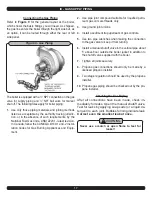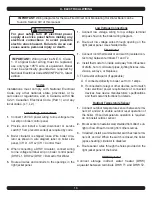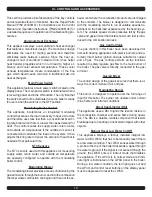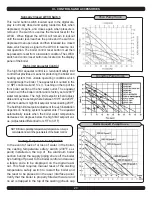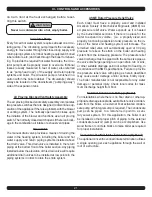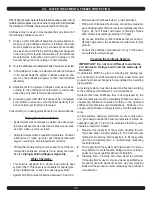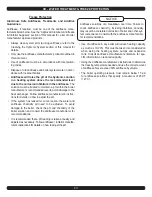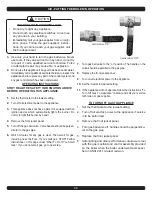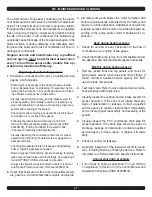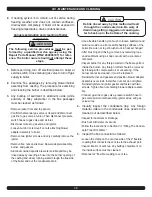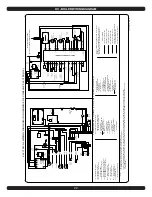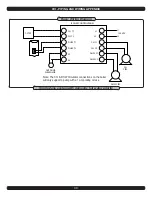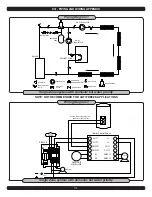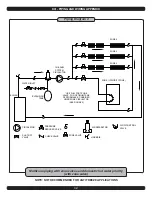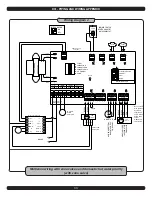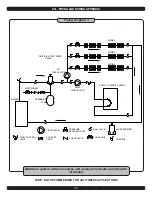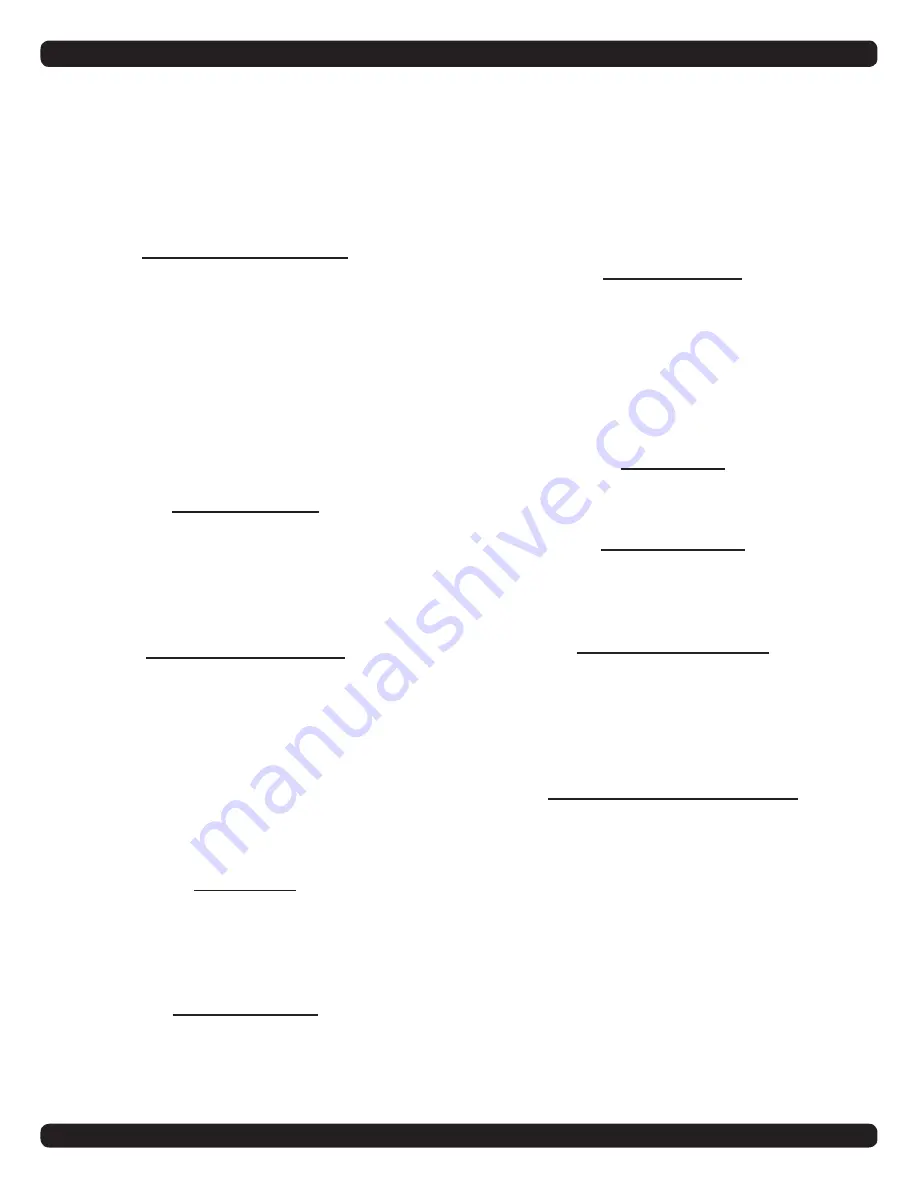
19
XI - CONTROLS aND aCCESSORIES
This section provides a brief description of the key controls
and accessories found in this boiler. See the Repair Parts
Manual (P/N# 240006107) for illustrations and the Control
Manual and Operation Instructions (P/N# 240006104) for
a detailed sequence of operation and troubleshooting pro-
cedures.
aluminum heat Exchanger
This appliance employs a cast aluminum heat exchanger
that features a monoblock design. The monoblock design
eliminates the need for mating sections and therefore
eliminates leaks between sections. Since the heat ex-
changer is cast of aluminum instead of iron, it has better
heat transfer properties which in turn lead to higher ef-
ficiency and cooler exhaust temperatures. These cooler
exhaust temperatures create condensation of the flue
gas, which would cause corrosion in traditional cast iron
heat exchangers.
main Power Switch
This appliance features a main power switch located on the
display panel. The main power switch is illuminated when it
is receiving power and in the ON position. The only time that
the switch should not be illuminated once the boiler is ready
for use is when the switch is in the OFF position.
modulating Boiler Control
This appliance incorporates an integrated modulating
control that senses the load necessary to heat a structure
and therefore uses less fuel than a conventional fixed fir-
ing rate boiler when there is a lower than peak demand for
heat. The control senses the supply water, return water,
and outside air temperatures if the outside air sensor is
connected and calculates the load on the system. It then
adjusts the firing rate to deliver the amount of heat that is
needed at that particular time.
NTC Sensors
The NTC sensors used with this appliance for measuring
supply water, return water, and outside air temperature
are specially configured to operate with the modulating
boiler control.
modulating Blower
The modulating blower provides a means of introducing the
gas/air mixture through the burner and into the combustion
chamber where combustion can begin and then out the ex-
haust vent where the combustion products are discharged
to the outdoors. The blower is designed to communicate
with the modulating control to run at variable speeds de-
pendent on the heat load experienced by the heating sys-
tem. The variable speeds create pressures felt by the gas
valve and gas/air mixer that dictate how much fuel is intro-
duced to the combustion process.
Gas Control valve
The gas controls in this boiler have been developed for
domestic heating appliances with premix burners and au-
tomatic direct burner ignition and are suitable for natural
and LP gas. The gas controls perform all the functions
required to safely regulate gas flow to the main burner of
the boiler. The gas valve is directly connected to the gas/
air mixer.
Gas/air mixer
The venturi design of the gas/air ensures that there is al-
ways the correct mixture of air and gas.
modulating Burner
This burner is designed to operate over the full range of
input for this boiler. The burner can operate under normal
(blue flame) and infrared conditions.
Direct Spark Igniter (DSI)
This appliance uses a DSI to ignite the fuel/air mixture in
the combustion chamber and sense flame during opera-
tion. The DSI is a durable, reliable component that resists
breakage due to handling or inadvertent impact with other
objects.
manual Reset Low water Cut Off
This appliance employs a factory installed integral low
water cut off (LWCO) that has to be manually reset if there
is a low water condition. The LWCO senses water through
a probe at the top of the boiler that sends a signal through
the water to ground. If the signal is not sensed through the
ground, the LWCO enters a lockout mode that disables
the appliance. If the LWCO is in normal mode a red indi-
cator light is illuminated on the LWCO panel in the boiler.
During a low water condition, the red light goes out and
the LWCO and control reset buttons on the display panel
must be depressed to reset the LWCO.













